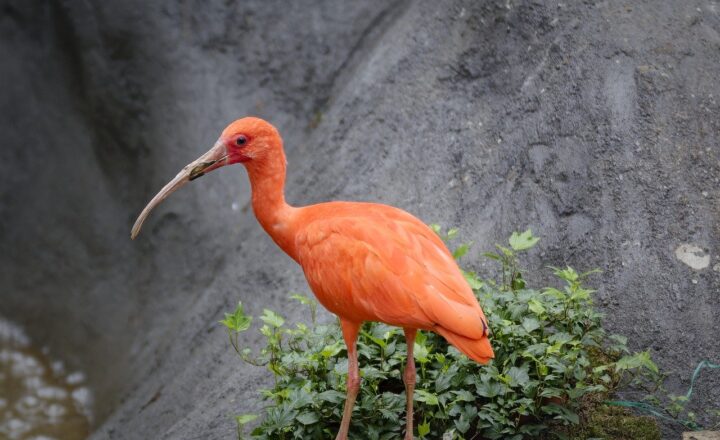The Strangest Animals That Lived During Prehistoric Times and What They Teach Us About Evolution
November 17, 2024

The history of our planet is a rich tapestry woven with the narratives of countless creatures that roamed its surface. From the towering dinosaurs of the Mesozoic Era to the peculiar insect life of the Paleozoic, prehistoric animals exhibit an astounding range of forms, behaviors, and adaptations. This article explores some of the strangest animals that ever lived during prehistoric times and delves into what their unique characteristics can teach us about evolution.
1. The Age of the Dinosaurs: A Closer Look at Weirdos
The Mesozoic Era, often dubbed the Age of the Dinosaurs, was a period of incredible diversity and bizarre adaptations. Among the most notorious are the following:
- Therizinosaurus: This giant dinosaur had long, claw-like fingers, measuring up to three feet in length. Despite its fearsome appearance, Therizinosaurus was likely a herbivore that used its massive claws to reach high vegetation. Its unusual morphology raises questions about the adaptations of herbivorous dinosaurs and their ecological roles.
- Stegosaurus: With its distinctive dorsal plates and spiked tail, Stegosaurus is often featured in depictions of dinosaur life. Its plates may have played a role in thermoregulation or mating displays, highlighting how physical traits can evolve in response to environmental demands and social behaviors.
- Pachycephalosaurus: Known for its thick, domed skull, this dinosaur is thought to have used its head for head-butting during mating rituals or social interactions. The evolution of such unique features emphasizes the importance of behavior in driving morphological changes.
Each of these dinosaurs teaches us that evolution is not a linear process; rather, it is shaped by the need for creatures to adapt to their environments and social structures.
2. The Marine Marvels of the Past
Many of the prehistoric creatures that inhabited our oceans were equally—if not more—extraordinary than their terrestrial counterparts.
- Megalodon: A massive shark that once dominated the oceans, Megalodon could reach lengths of over 60 feet. Its sheer size and powerful bite illustrate how predatory behaviors can influence the evolution of size in marine organisms. Understanding Megalodon’s ecological role can help us learn about apex predators today.
- Dunkleosteus: This prehistoric fish boasted a heavily armored head with massive jaw plates that could crush bone. It represents a unique case where armor and powerful jaws were adaptations in a single lineage, leading scientists to study how protective traits can evolve alongside predatory skills.
- Plesiosaur: Often depicted with their long necks and small heads, these marine reptiles are fascinating examples of convergent evolution, where they evolved similar traits independently from dinosaurs. Their adaptations demonstrate how environmental pressures can lead to similar outcomes across different lineages.
The adaptations seen in these marine creatures shed light on the evolution of predation and survival strategies in aquatic ecosystems.
3. The Airborne Wonders: Pterosaurs
While often confused with dinosaurs, pterosaurs were flying reptiles that lived alongside them but belonged to a different lineage altogether.
- Pteranodon: Characterized by its large wingspan that exceeded 30 feet, this pterosaur had a distinctive crest on its head, the function of which is still debated. Its existence challenges our understanding of the evolution of flight and the adaptations required for soaring.
- Quetzalcoatlus: One of the largest flying creatures ever, with a wingspan of up to 36 feet, Quetzalcoatlus provides crucial insights into the evolutionary limits of flight. Its enormous size raises questions about how such creatures could achieve and sustain flight over long distances.
Pterosaurs reinforce the idea that avian flight evolved through a complex series of adaptations and ecological pressures.
4. The Uncommon Cold-Blooded Creatures of the Paleozoic
Prehistoric life was not solely dominated by large, fearsome creatures. The Paleozoic Era was home to an array of oddities that showcase the diversity of life.
- Trilobites: These ancient arthropods existed for over 250 million years and came in various shapes and sizes. Their segmented bodies and compound eyes represent early successful adaptations to predation in marine habitats. The trilobites’ extinction event teaches us about the fragility of life and how mass extinctions reset evolutionary processes.
- Eurypterids (Sea Scorpions): These formidable creatures could grow up to 10 feet long and are among the largest arthropods ever. Their predatory nature and successful adaptation to both marine and terrestrial environments provide insights into evolutionary transitions between water and land.
The bizarre forms and successful adaptations of Paleozoic creatures highlight how life has continually navigated challenges and changes over Earth’s history.
5. The Lessons of Extinction and Survival
The study of these strange prehistoric animals ultimately offers valuable lessons about evolution.
- Adaptation is Key: Each of these creatures had evolutionary traits that allowed them to thrive in their environments. Whether it was size, unique morphology, or behavioral adaptations, resilience through change is a common thread in evolution.
- Diversity Affects Survival: The extinction of many species, including those bizarre ones, emphasizes the need for biodiversity. Ecological stability often hinges on the multitude of species and their interactions.
- Change is Inevitable: The earth’s history is marked by cycles of rise and fall, showcasing the importance of adaptation to survive in evolving ecosystems.
As we reflect upon the fascinating forms of life that once existed, we can understand how these unique animals have paved the way for current biodiversity and continue to shape our understanding of evolution.
Conclusion: The Winds of Change
The strangeness of prehistoric animals captivates our imagination while also providing essential lessons about adaptation and survival that resonate today. Through studying these unique creatures, we not only appreciate the complexity of evolution but also recognize our responsibility to protect the rich biodiversity that remains on our planet. As we face dramatic climate change and habitat loss in the modern era, the stories of these prehistoric beings remind us that survival hangs in the balance and that understanding evolution is key to facing future challenges.
Understanding the lessons from these ancient creatures will help shape a more sustainable world for future generations.







